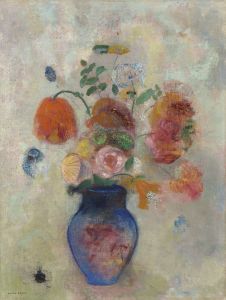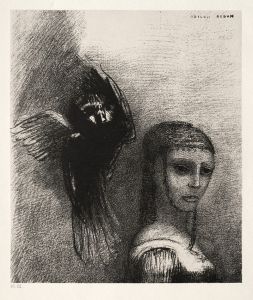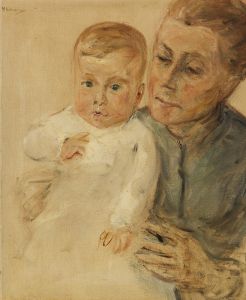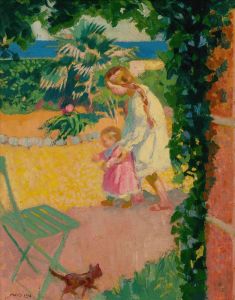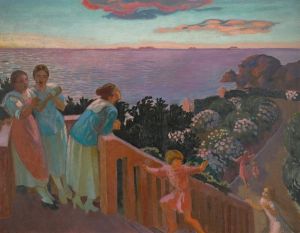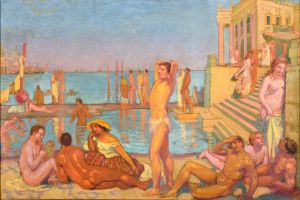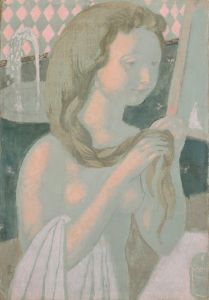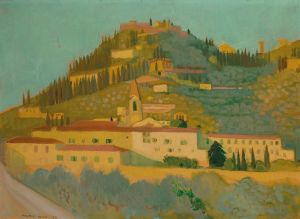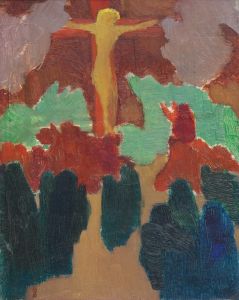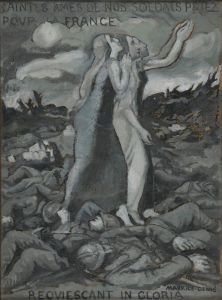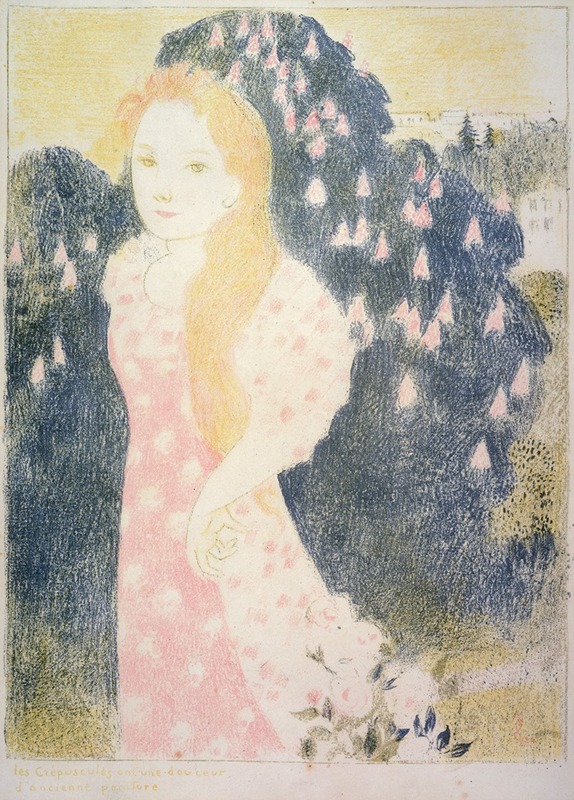
Les crépuscules ont une douceur d’ancienne peinture
A hand-painted replica of Maurice Denis’s masterpiece Les crépuscules ont une douceur d’ancienne peinture, meticulously crafted by professional artists to capture the true essence of the original. Each piece is created with museum-quality canvas and rare mineral pigments, carefully painted by experienced artists with delicate brushstrokes and rich, layered colors to perfectly recreate the texture of the original artwork. Unlike machine-printed reproductions, this hand-painted version brings the painting to life, infused with the artist’s emotions and skill in every stroke. Whether for personal collection or home decoration, it instantly elevates the artistic atmosphere of any space.
Maurice Denis was a prominent French painter and a key figure in the Symbolist and Nabi movements, known for his contributions to modern art in the late 19th and early 20th centuries. One of his notable works is "Les crépuscules ont une douceur d’ancienne peinture," which translates to "Twilights Have the Sweetness of Ancient Painting." This painting exemplifies Denis's unique approach to art, which often involved a synthesis of symbolism, spirituality, and a reverence for the past.
Denis was born on November 25, 1870, in Granville, France. He was a founding member of the Nabi group, which included artists like Pierre Bonnard and Édouard Vuillard. The Nabis were known for their avant-garde approach, emphasizing the importance of color and form over realistic representation. Denis, in particular, was deeply influenced by religious themes and the works of earlier masters, which is evident in his painting style.
"Les crépuscules ont une douceur d’ancienne peinture" reflects Denis's fascination with the interplay of light and color, as well as his interest in capturing the serene and contemplative aspects of nature. The title itself suggests a nostalgic quality, evoking the gentle and timeless beauty of twilight scenes reminiscent of classical paintings. Denis often sought to convey a sense of harmony and tranquility in his work, drawing inspiration from both the natural world and spiritual themes.
The painting is characterized by its use of soft, muted colors and a composition that emphasizes the peaceful transition from day to night. Denis's technique often involved flat planes of color and simplified forms, which were hallmarks of the Nabi movement. This approach allowed him to focus on the emotional and symbolic content of the scene rather than on detailed realism.
Denis's work was also influenced by his devout Catholic faith, which often informed the themes and subjects of his paintings. He believed that art should serve a spiritual purpose and sought to create works that were both aesthetically pleasing and spiritually uplifting. This philosophy is evident in "Les crépuscules ont une douceur d’ancienne peinture," where the serene twilight setting can be interpreted as a metaphor for spiritual reflection and contemplation.
Throughout his career, Maurice Denis remained committed to exploring the connections between art, spirituality, and the natural world. His contributions to the Symbolist and Nabi movements helped pave the way for future developments in modern art, influencing artists who sought to break away from traditional representational techniques.
Denis passed away on November 13, 1943, in Paris, leaving behind a legacy of work that continues to be celebrated for its beauty and depth. "Les crépuscules ont une douceur d’ancienne peinture" remains an exemplary piece within his oeuvre, showcasing his ability to blend the past with the present, and the earthly with the spiritual, in a harmonious and evocative manner.





